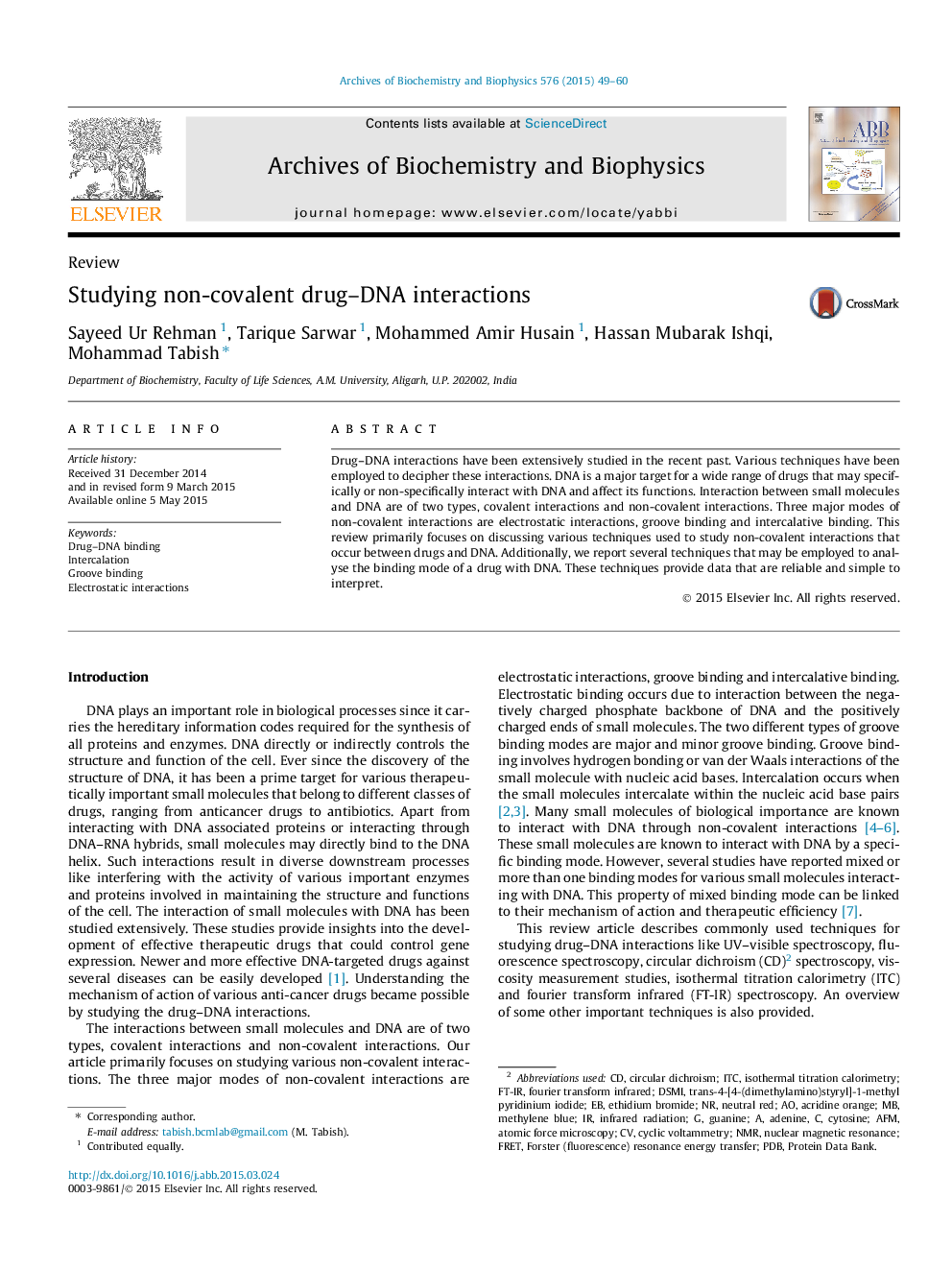| Article ID | Journal | Published Year | Pages | File Type |
|---|---|---|---|---|
| 1924930 | Archives of Biochemistry and Biophysics | 2015 | 12 Pages |
•Various techniques used to study the drug–DNA interactions are reviewed.•The results obtained using these techniques are simple and easy to interpret.•Figures clearly demarcate intercalative and non-intercalative binding mode.
Drug–DNA interactions have been extensively studied in the recent past. Various techniques have been employed to decipher these interactions. DNA is a major target for a wide range of drugs that may specifically or non-specifically interact with DNA and affect its functions. Interaction between small molecules and DNA are of two types, covalent interactions and non-covalent interactions. Three major modes of non-covalent interactions are electrostatic interactions, groove binding and intercalative binding. This review primarily focuses on discussing various techniques used to study non-covalent interactions that occur between drugs and DNA. Additionally, we report several techniques that may be employed to analyse the binding mode of a drug with DNA. These techniques provide data that are reliable and simple to interpret.
Graphical abstractFigure optionsDownload full-size imageDownload high-quality image (113 K)Download as PowerPoint slide
